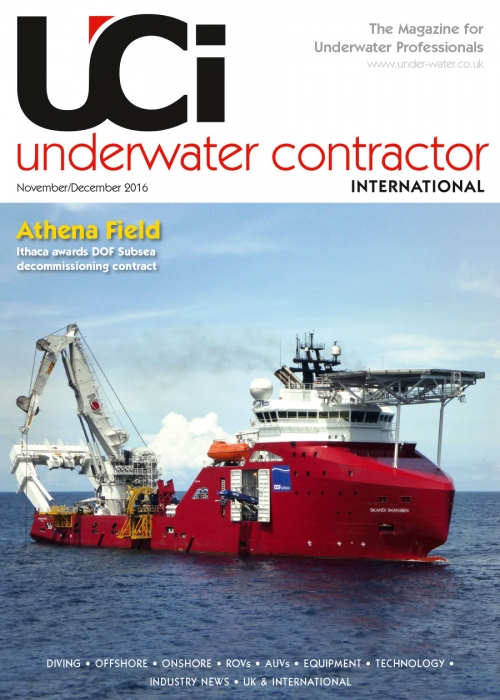
The Magazine for Underwater Professionals
![]() Jul/Aug 2015
Jul/Aug 2015
TRAINING
Come fly with us
Michael Cocks returns to the Divers Institute of Technology, and finds the school has its sights set on becoming the world leader in ROV training
The new intensive, 24-week ROV course will be to IMCA and Diver Certification Board of Canada standards
In March I paid a welcome return to the Divers Institute of Technology (DIT) in Seattle, USA, my fifth visit since 2001. The school is run by Bruce Banks, a former Commanding Officer of the United States Navy Diving and Training College. Since my last visit more than three years ago, much progress has made, with many more new projects provided for the students, the offering of a Divers Medical Technician (DMT) course compliant with IMCA, and a decision to begin intensive ROV training.
In the past I have raised two slight niggles; namely the lack of a wet bell and the scuba training occurring towards the end of the 28-week course. The first issue is being resolved, with a wet bell to be installed on the excellent Response vessel. As much as I am against teaching scuba in a surface-supplied training course, DIT continues to provide NAUI (National Association of Underwater Instructors) scuba because scuba certification is required by its international surface-supplied diving standard. I believe there is certainly a place for a professional scuba course for media and scientific divers, but to my mind scuba has no place in commercial diving work; I also believe the large majority of diving deaths occur in scuba.
I started off my two-day visit in the company of Bill McGilton, who had looked after me on my last visit. Bill previously spent 36 years at Boeing and helped in the American space programme. I was pleased to learn that, at an age slightly older than me, Bill is still diving and is also making considerable progress in developing a substance to rapidly increase the growth of coral in the Philippines, with the aim of raising the fish population there.
PRODUCE
Bill introduced me to Eric Compton, a new arrival, who has been working with Bill to produce a 24-week ROV course. Eric’s career started in the US Navy as a sonar technician on nuclear fast attack submarines. Eric has 35 years of ROV experience, having worked with Oceaneering, Global Diving and Salvage and Honeywell, where he led the manufacture, integration and testing of the US Navy’s SLQ-48 Mine Neutralisation Vehicles.
DIT’s 24-week ROV course, to start later in 2015, will be to IMCA and Diver Certification Board of Canada standards, and DIT hopes to become the leading ROV training school in the world. The course comprises two 12-week courses; the first 12 weeks provide the students with aptitude but no experience; the students are given the prerequisite knowledge in basic maths, electronics, hydraulics and mechanics to allow them to qualify for the second ROV technician and pilot 12-week course. Because this course will offer government and VA (Veterans Administration) loans and grants, this ambitious course is an affordable means of training a new generation of ROV technicians and pilots.
On the diving front I was shown a number of new underwater projects for the students to work on. The course is still as intensive as ever, but apart from the last deep-diving session, training now takes place on the first four days of the week. Well over half of the students come from those who have served in the armed forces, who get help with their fees. As required by the government, in order to obtain funding, more than 80% of the students find work after graduation. I spent my second day with students practising deep diving and the use of the decompression chamber on the Response, under the sharp eyes of Mike Kleinfelder, who has been at the school for eight years, and Doug Irish, newly arrived after extensive dive work in the US Navy. The students had a further two and a half weeks of training to go.
One recent addition – very welcome to the students – is to have one dive in the old Mark V equipment; on a previous visit I had dived in the equipment used by Robert de Niro in the film Men of Honor. They can also undertake a short extra course on helmet maintenance.
SHAPE
The school seems in very good shape and this is confirmed by a recent article in the Underwater magazine of the American Association of Diving Contractors. The students have to work closely together, both out and under the water, and most seemed to have done the necessary research before choosing to come to the school. As in the past, I was well looked after by Bruce Banks and I look forward to returning, when the wet bell and ROV courses are up and running. DIT maintains a close link with the Underwater Centre in Fort William, UK, and many of the students go on to do the saturation course there or in Australia.


